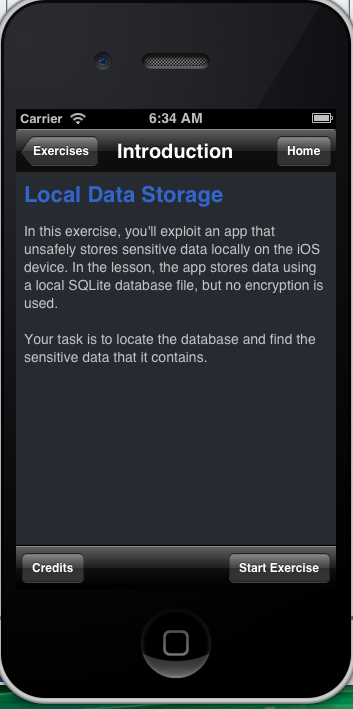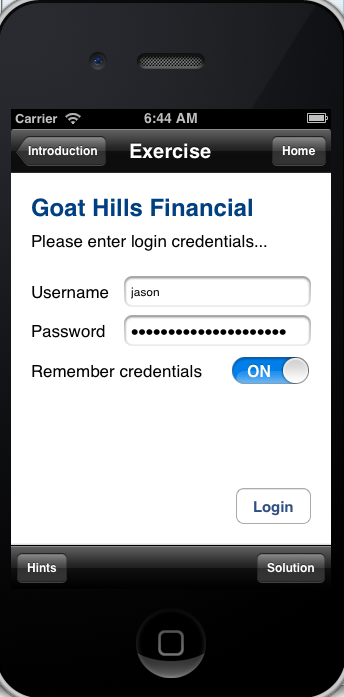This site is the archived OWASP Foundation Wiki and is no longer accepting Account Requests.
To view the new OWASP Foundation website, please visit https://owasp.org
Mobile Top 10 2014-M2
| Threat Agents | Attack Vectors | Security Weakness | Technical Impacts | Business Impacts | |
|---|---|---|---|---|---|
| Application Specific | Exploitability EASY |
Prevalence COMMON |
Detectability EASY |
Impact SEVERE |
Application / Business Specific |
| Threats agents include the following: an adversary that has attained a lost/stolen mobile device; malware or a other repackaged app acting on the adversary's behalf that executes on the mobile device. | In the event that an adversary physically attains the mobile device, the adversaryhooks up the mobile device to a computer with freely available software. These tools allow the adversary to see all third party application directories that often contain stored personally identifiable information (PII) or other sensitive information assets. An adversary may construct malware or modify a legitimate app to steal such information assets. | Insecure data storage, vulnerabilities occurs when development teams assume that users or malware will not have access to a mobile device's filesystem and subsequent sensitive information in data-stores on the device. Filesystems are easily accessible. Organizations should expect a malicious user or malware to inspect sensitive data stores. Rooting or jailbreaking a mobile device circumvents any encryption protections. When data is not protected properly, specialized tools are all that is needed to view application data. | Insecure data storage can result in data loss, in the best case, for one user. In the worst case, for many users. Common valuable pieces of data seen stored include:
|
Insecure data storage vulnerabilities typically lead to the following business risks for the organization that owns the risk app:
|
|
It is important to threat-model your mobile app to understand the information assets it processes and how the underlying APIs handle those assets. These APIs should store sensitive information securely. Places OWASP most often sees data being stored insecurely include the following:
- SQLite databases
- Log Files
- Plist Files
- XML Data Stores or Manifest Files
- Binary data stores
- Cookie stores
- SD Card
- Cloud synced
When applying encryption and decryption to sensitive information assets, malware may perform a binary attack on the app in order to steal encryption or decryption keys. Once it steals the keys, it will decrypt the local data and steal sensitive information. See OWASP Mobile Top Ten 2014 Category M10 for more information on this topic.
The cardinal rule of mobile apps is to not store data unless absolutely necessary. As a developer you have to assume that the data is forfeited as soon as it touches the phone. You also have to consider the implications of losing mobile users' data to a silent jailbreak or root exploit. If the usability versus security trade-off is too much for you, OWASP recommends scrutinizing your platforms data security APIs and making sure you’re calling them appropriately. The lesson here is to know what data is being stored and protect it appropriately.
iOS Specific Best Practices:
- Never store credentials on the phone file system. Force the user to authenticate using a standard web or API login scheme (over HTTPS) to the application upon each opening and ensure session timeouts are set at the bare minimum to meet the user experience requirements.
- Where storage or caching of information is necessary consider using a standard iOS encryption library such as CommonCrypto. However, for particularly sensitive apps, consider using whitebox cryptography solutions that avoid the leakage of binary signatures found within common encryption libraries.
- If the data is small, using the provided apple keychain API is recommended but, once a phone is jailbroken or exploited the keychain can be easily read. This is in addition to the threat of a bruteforce on the devices PIN, which as stated above is trivial in some cases.
- For databases consider using SQLcipher for Sqlite data encryption
- For items stored in the keychain leverage the most secure API designation, kSecAttrAccessibleWhenUnlocked (now the default in iOS 5) and for enterprise managed mobile devices ensure a strong PIN is forced, alphanumeric, larger than 4 characters.
- For larger or more general types of consumer-grade data, Apple’s File Protection mechanism can safely be used (see NSData Class Reference for protection options).
- Avoid using NSUserDefaults to store sensitive pieces of information as it stores data in plist files.
- Be aware that all data/entities using NSManagedObects will be stored in an unencrypted database file.
- Avoid exclusively relying upon hardcoded encryption or decryption keys when storing sensitive information assets.
- Consider providing an additional layer of encryption beyond any default encryption mechanisms provided by the operating system.
Android Specific Best Practices:
- For local storage the enterprise android device administration API can be used to force encryption to local file-stores using “setStorageEncryption”
- For SD Card Storage some security can be achieved via the ‘javax.crypto’ library. You have a few options, but an easy one is simply to encrypt any plain text data with a master password and AES 128.
- Ensure any shared preferences properties are NOT MODE_WORLD_READABLE unless explicitly required for information sharing between apps.
- Avoid exclusively relying upon hardcoded encryption or decryption keys when storing sensitive information assets.
- Consider providing an additional layer of encryption beyond any default encryption mechanisms provided by the operating system.
A Visual Example:
iGoat is a purposefully vulnerable mobile app for the security community to explore these types of vulnerabilities first hand. In the exercise below, we enter our credentials and log in to the fake bank app. Then, we navigate to the file system. Within the applications directory, we can see a database called “credentials.sqlite”. Exploring this database reveals that the application is storing our username and credentials (Jason:pleasedontstoremebro!) in plain text.


